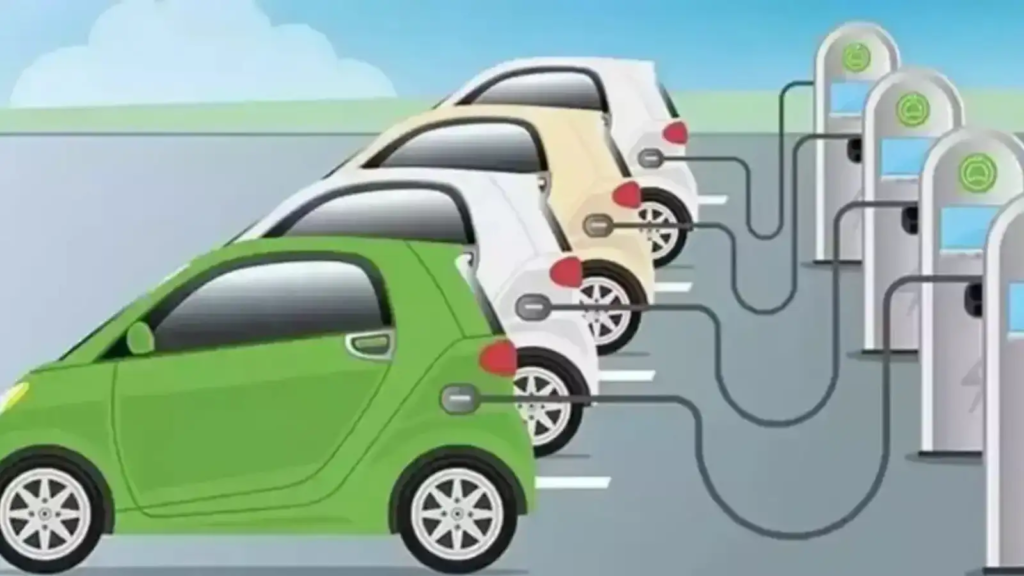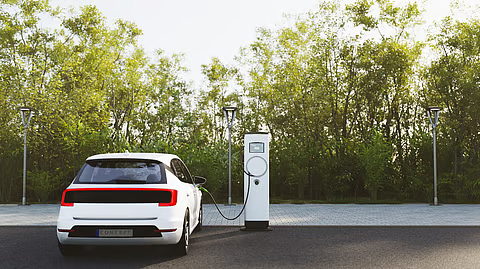In the first three months of 2025, the global market for passenger electric vehicles (EVs) experienced a remarkable surge, with imports rising by an impressive one-third compared to the same period in 2024. This significant growth signals a strong shift toward sustainable transportation and reflects the growing demand for cleaner, greener vehicles worldwide. As countries push for reduced carbon emissions and governments roll out supportive policies, the EV market is gaining momentum, transforming the automotive industry and reshaping how we think about mobility.

A Booming Market for Electric Vehicles
The rise in EV imports is a clear indicator of the accelerating transition to electric mobility. According to recent data, global electric car sales in the first quarter of 2025 grew by 35% year-on-year, with a total of 4.3 million battery-electric vehicles (BEVs) and plug-in hybrid electric vehicles (PHEVs) delivered worldwide. This growth is not limited to major markets like China, Europe, and the United States but is also evident in emerging economies, where EV adoption is picking up speed.
One standout example is Ukraine, where imports of passenger electric vehicles nearly tripled in the first quarter of 2025, reaching 20,100 units. This represents a 33% increase compared to the same period last year, with a total customs value of $355.5 million. Of these, 4,400 were new vehicles, a 12% rise from 2024, with 93% originating from China. The popularity of models like the BYD Song Plus, Volkswagen ID.Unyx, and ZEEKR 001 highlights the growing appeal of affordable and innovative EVs in regions beyond traditional automotive hubs.
What’s Driving the Surge?
Several factors are fueling this surge in EV imports. First, consumer demand for electric vehicles is at an all-time high. As battery technology improves, offering longer ranges and faster charging times, EVs are becoming a practical choice for more drivers. Falling battery costs and the introduction of mass-market models have also made electric cars more affordable, appealing to a broader range of consumers.
Government policies are another major driver. Countries worldwide are implementing stricter CO2 emissions standards and offering incentives to encourage EV adoption. For instance, the European Union has set ambitious targets to reduce new car emissions by 15% by 2025 and 55% by 2030, compared to 2021 levels. To meet these goals, European manufacturers are ramping up production, and imports from countries like China are helping to fill the gap. In the first quarter of 2025, new battery-electric car sales in the EU grew by 23.9%, capturing a 15.2% market share, up from 12% in 2024.
China, the global leader in EV production, is playing a pivotal role in this import boom. In 2024, China accounted for over 70% of global electric car production, manufacturing 12.4 million units. Chinese brands like BYD, Geely, and Wuling are not only dominating their domestic market but also expanding globally. For example, BYD, which saw a slight dip in market share due to increased competition, still led global EV sales in the first quarter of 2025, delivering 337,697 units. The company is now focusing on exports, with plans to sell half of its vehicles outside China by 2030.
In addition to consumer demand and policy support, trade dynamics are also contributing to the rise in imports. In the United States, imports of electric cars grew by 40% in 2024, reaching 630,000 units, with Mexico emerging as the largest trade partner, supplying 145,000 vehicles. This trend continued into 2025, as manufacturers in Mexico, including U.S. and Japanese brands, capitalized on regional trade agreements to meet growing demand.

Regional Highlights: Where EVs Are Gaining Ground
The growth in EV imports is not uniform across the globe, with different regions showing unique trends. In Europe, countries like Germany, Belgium, and the Netherlands reported robust gains in battery-electric vehicle registrations, with Germany alone seeing a 38.9% increase in the first quarter of 2025. However, France experienced a slight decline, highlighting the uneven pace of adoption even within major markets.
In emerging markets, the story is equally compelling. Ethiopia, for example, deployed 100,000 electric vehicles in 2024 following a ban on imports of petrol and diesel cars. While challenges like limited charging infrastructure outside the capital remain, the country’s rapid adoption of EVs underscores the potential for growth in developing economies. Similarly, Southeast Asian countries like Vietnam and Thailand are seeing increased EV imports, driven by policies that favor domestic manufacturing and tax exemptions for foreign manufacturers committing to local production.
China remains the powerhouse of the EV market, with projections indicating that it will sell over 14 million electric cars in 2025, accounting for nearly 60% of the global market. The extension of trade-in schemes for older vehicles has further boosted sales, making electric cars an attractive option for Chinese consumers.
Challenges and Opportunities
Despite the impressive growth, the EV market faces challenges that could impact future import trends. Supply chain bottlenecks, volatile commodity prices, and geopolitical tensions, such as the U.S.-China trade war, pose risks to sustained growth. In the U.S., the anticipated withdrawal of the Inflation Reduction Act’s EV tax credits in the second half of 2025 could dampen demand, with forecasts predicting a 0.9% year-on-year decline in light-vehicle sales.

Additionally, the availability of charging infrastructure remains a critical issue. While the number of charging points is increasing globally, many countries, particularly in emerging markets, struggle to keep pace with the rapid rise in EV sales. For example, in Ethiopia, garages face difficulties sourcing components for repairs, and charger deployment outside urban areas is limited.
On the opportunity side, the growing variety of EV models is a significant driver of imports. By 2024, nearly 785 electric car models were available worldwide, a 15% increase from the previous year. This number is expected to surpass 1,000 by 2026, offering consumers more choices and driving competition among manufacturers. Affordable models, like BYD’s upcoming e7 saloon priced at around $12,800, are likely to further accelerate adoption in price-sensitive markets.
The Road Ahead
The 33% increase in passenger electric vehicle imports in the first quarter of 2025 is a testament to the global shift toward sustainable transportation. As governments tighten emissions regulations, manufacturers expand production, and consumers embrace electric mobility, the EV market is poised for continued growth. By 2030, forecasts suggest that electric vehicles could account for 43% of global light-vehicle sales, rising to 65.3% by 2035.
For consumers, this surge in imports means more options, better technology, and potentially lower prices as economies of scale kick in. For manufacturers, it presents an opportunity to innovate and capture market share in a rapidly evolving industry. However, addressing challenges like charging infrastructure and supply chain resilience will be crucial to maintaining this momentum.
As the world moves toward a greener future, the rise in EV imports is more than just a statistic—it’s a sign of a broader transformation in how we move, live, and think about our planet. With countries like Ukraine, China, and the EU leading the charge, the electric vehicle revolution is well underway, and the first quarter of 2025 has set the stage for an exciting year ahead.
Also read :- Consumers Embrace Eco-Friendly Tech: Sustainable Gadgets Take Center Stage in 2025






